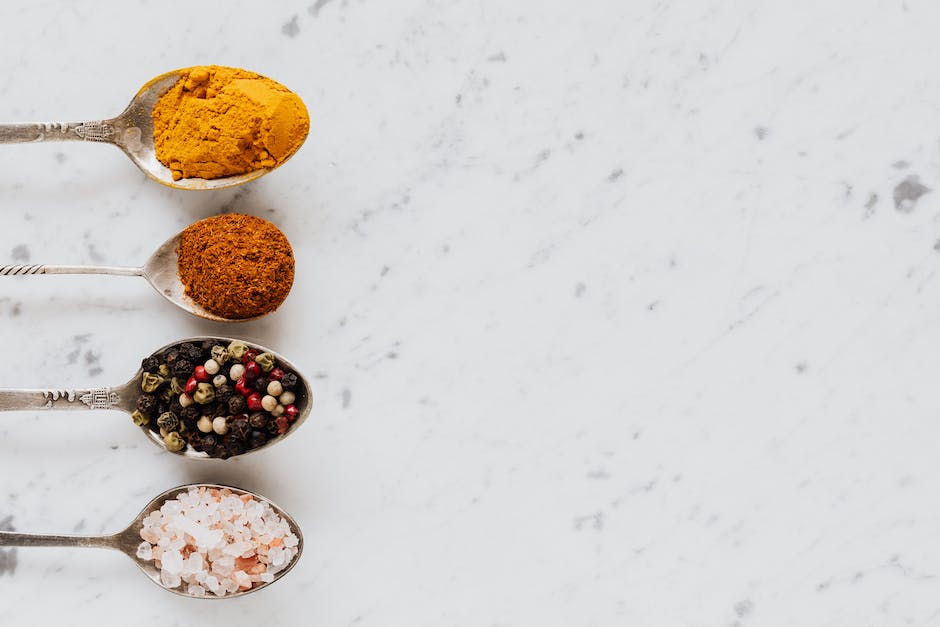Cannabis has come a long way since being classified as an illegal drug. Nowadays, it is widely recognized for its medical properties that alleviate chronic pain, cancer-associated symptoms, and psychiatric disorders like anxiety and depression. With the industry’s growth, cannabis is also becoming a culinary trend. More people are experimenting with infusing cannabis into their food for its therapeutic benefits, so we thought it would be worth exploring how this trend is influencing the culinary scene. Whether you are a foodie, a cannabis enthusiast, or just curious, this post will give you an idea of the culinary art of cannabis and how it’s transforming our meals.
The history of cannabis in culinary arts, including its use in ancient cultures and modern-day cuisine

Cannabis has a rich history in culinary arts that dates back thousands of years. Ancient Chinese and Indian cultures infused cannabis into their herbal medicine and cooking as far back as 2000 BC. In India, bhang, a drink made with cannabis paste, milk, and spices, is an essential part of the Hindu festival of Holi. In ancient Greece, cannabis was used for medicinal purposes, and the famous philosopher Diogenes mixed it with wine to accompany his philosophical musings.
Today, cannabis has made a resurgence in modern-day cuisine. Chefs from all over the world are experimenting with different strains of cannabis in their cooking, creating a brand new culinary experience now known as “cannabis cuisine.” The legalization of cannabis in some countries for medicinal and recreational use has contributed to this trend. With consumers becoming more health-conscious, cannabis-infused meals offer a unique way to incorporate wellness into their diets. The cannabinoids that are present in cannabis such as THC and CBD are now known to have medicinal properties that help alleviate symptoms of anxiety, depression, inflammation, and chronic pain.
In conclusion, the use of cannabis in culinary arts has a long and interesting history that continues to evolve. Incorporating cannabis into our diets may sound unconventional, but it is a promising trend in the food industry that may offer several health benefits when used responsibly.
Different methods of infusing cannabis into food, such as using cannabis butter, tinctures or oils

.
For those who are considering experimenting with cannabis-infused recipes, there are various methods to infuse cannabis into food. One popular method is to use cannabis butter, which is essentially a blend of butter and ground cannabis flower. This butter can then be used in any recipe that calls for regular butter, such as cookies, muffins, or sauces.
Another option is to use cannabis tinctures, which are alcohol-based extracts of cannabis. These tinctures can be easily added to drinks or used as a flavoring agent in recipes. Cannabis oils are also an option, and are typically made by cooking cannabis flower or concentrates in a carrier oil such as coconut or olive oil. These oils can be added to dressings, marinades, or used as a finishing oil for dishes.
It’s important to note that when cooking with cannabis, it’s crucial to use the right dosage to avoid any negative effects. Experimentation is key, especially when it comes to finding the right dosage for each individual. In addition, it’s important to follow regulations in your area regarding the use of cannabis in cooking and consumption.
By infusing cannabis into meals, we can add some wellness to our plates while also exploring different flavors and ingredients.
The benefits of cooking with cannabis, including pain relief, reduced anxiety, and overall relaxation
Cooking with cannabis is not just about achieving that perfect high; it is also about promoting overall wellness through food. Cannabis contains cannabinoids that have multiple therapeutic properties, such as pain relief, reduced anxiety, and relaxation. These benefits make it an excellent ingredient to add to your meals, whether you are a casual cook or a professional chef.
For those suffering from chronic pain, cooking with cannabis can be a game-changer. The cannabinoids in cannabis are known to be effective in reducing pain and inflammation, making it a great natural alternative to traditional painkillers. Adding it to meals can also help improve appetite and sleep quality, which can benefit those undergoing cancer treatments or suffering from other medical conditions.
Cooking with cannabis can also help those dealing with anxiety and stress. The cannabinoids in cannabis interact with receptors in the brain that regulate mood, and can result in a calming sensation. This can alleviate symptoms associated with anxiety and promote overall relaxation.
Moreover, cannabis is known for its health benefits, including antioxidants, anti-inflammatory properties, and neuroprotective properties. Incorporating it into your meals can offer a range of health benefits and promote overall well-being.
In conclusion, cooking with cannabis not only encourages culinary experimentation but also empowers us to reap the wellness benefits that come with this multifaceted plant. With its therapeutic qualities and notable health benefits, cannabis is quickly becoming a culinary trend for those looking to infuse wellness into their meals.
Different types of cannabis strains and their unique flavors and effects on the taste of food

Cannabis strains come in a variety of flavors and can be classified into three major types: sativa, indica, and hybrid. Each strain has unique effects on the body and can make a significant difference in the taste of food infused with cannabis. Sativa strains provide a more energizing and uplifting effect, making them perfect for breakfast, while Indica strains are more calming and relaxing, and better suited for dinner. Hybrid strains provide a balanced high that can be enjoyed any time of the day. When cooking with cannabis, it’s essential to choose a strain that complements the flavors of the dish and the desired effects. For example, a citrusy Sativa strain adds a summery feel to a refreshing salad, while a spicy Indica strain adds a warm and cozy flavor to an evening soup. The possibilities are endless when it comes to cooking with cannabis strains, and it’s a journey that anyone interested in culinary art should explore.
How to calculate and measure the dosage of cannabis in your meals for consistent results

.
When it comes to infusing cannabis into your meals, it’s crucial to calculate and measure the dosage to ensure consistent results. You don’t want to end up with an overly potent dish that could lead to an uncomfortable high.
To start, you’ll need to determine the potency of your cannabis. Most cannabis products will have a THC or CBD content listed on the packaging. If you’re using raw cannabis flower, you’ll need to have it tested at a lab or use an estimation based on the strain’s average potency.
Once you know the potency of your cannabis, you’ll need to calculate the dosage per serving. A basic formula to use is:
(milligrams of THC or CBD per gram of cannabis flower) x (number of grams of cannabis used) = total milligrams of THC or CBD in your recipe
Then, divide the total milligrams of THC or CBD by the number of servings to get the dosage per serving. For example, if your recipe uses 5 grams of cannabis flower with a potency of 15% THC, your calculation would be:
(150mg THC per gram) x (5 grams) = 750mg total THC in your recipe
750mg total THC / 10 servings = 75mg THC per serving
It’s worth noting that the effects of ingested cannabis can take longer to onset and last longer than inhaling it. It’s essential to wait at least an hour before consuming more to avoid overdoing it.
By taking the time to accurately measure and calculate your cannabis dosage, you can enjoy the culinary art of cannabis while also promoting wellness in your meals.
Examples of popular cannabis-infused recipes, such as brownies, pizza, and cocktails

.
Cannabis-infused meals are becoming increasingly popular among foodies and wellness enthusiasts across the world. From sweet treats to savory dishes, you can infuse cannabis into nearly any recipe that calls for some added herbaceous flavor. Here are a few examples of popular cannabis-infused recipes that are making waves in the culinary world:
Brownies: Cannabis brownies are a classic edible that have been enjoyed for decades. With the right dosage and the perfect blend of cannabis and chocolate, you can create a heavenly dessert that not only tastes amazing, but also delivers the benefits of cannabis.
Pizza: Cannabis-infused pizza is a delicious, savory option for cannabis enthusiasts. With ingredients like cannabutter, tomato sauce, and mozzarella cheese, you can create a delicious and healthy edible that is perfect for any pizza night.
Cocktails: Cannabis-infused cocktails are the perfect way to mix wellness and fun. Infusing cannabis into your favorite cocktail can enhance the flavor and provide a relaxing and uplifting effect that can help you de-stress and unwind.
These are just a few examples of the incredible range of cannabis-infused recipes that are now available. From pasta to smoothies, you can explore a wide range of creative and delicious options that allow you to infuse wellness and cannabis into every meal.
Safety considerations when cooking with cannabis, such as keeping out of reach of children and labeling food clearly

When it comes to cooking with cannabis, safety should always be a top priority. It’s essential to keep all cannabis-infused products out of reach of children and pets, as they might mistake them for regular food items. It’s also crucial to label cannabis-infused foods clearly, indicating that they contain THC or CBD. This can prevent any accidental consumption by individuals who may be unfamiliar with cannabis-infused foods or are not interested in consuming them. When cooking with cannabis, it’s also essential to start slow and consume small amounts, as some products may have a high THC concentration and can lead to unexpected effects. Lastly, always store cannabis-infused products in an airtight container and in a secure location to ensure they remain fresh and out of reach of children or pets. By following these safety tips, we can all enjoy the benefits of adding cannabis-infused foods to our culinary adventures while ensuring everyone’s safety.
The potential for cannabis-infused meals in the wellness industry, such as restaurants and retreat centers
Cannabis, once stigmatized and associated with recreation, has now emerged as an essential component of the wellness industry. From medicinal usage to recreational purposes, cannabis has found its way into different forms of consumption, including culinary art.
The popularity of cannabis-infused meals is on the rise as it promises to offer a unique and elevated dining experience. Restaurants and retreat centers have started to incorporate cannabis in their menus, focusing on its healing properties, such as pain relief, better digestion, and improved appetite.
Furthermore, cannabis-infused meals also provide an alternative for those who prefer a non-alcoholic and non-sugar-based wellness beverage. Consumers can now choose from a variety of cannabis-infused drinks, including teas, smoothies, and tonics, all of which are aimed at promoting a healthy lifestyle.
As the trend continues to grow, it is essential to note that chefs must adhere to industry standards and regulations. Proper dosing and labeling must be done to avoid any potential legal issues or adverse effects on the consumers.
Overall, the culinary art of cannabis has shown promising potential in the wellness industry. As chefs and restaurateurs continue to explore this new frontier, the possibilities for creating nutritious and delicious cannabis-infused meals are endless.

